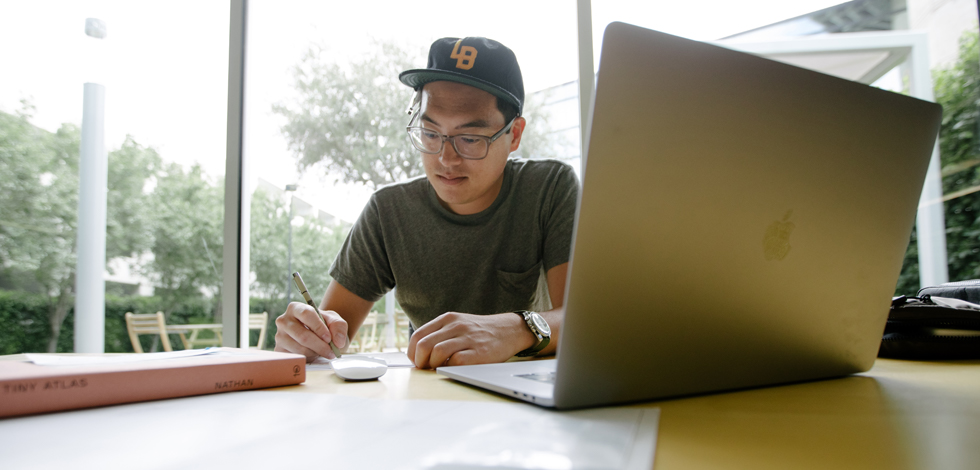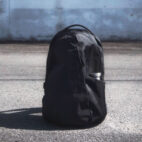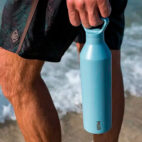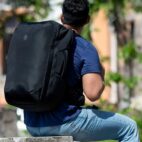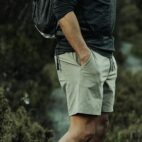Designing the Incase x Bionic Collection: with Kenji Okada
With the new Incase x Bionic collection dropping today, I had the chance to digitally sit down with Incase’s Kenji Okada to talk about his role in Incase’s brand new Bionic Collection and its long process from concept, development, and execution. Cozy in and join us on this adventure, which takes a little dip into Costa Rica’s warm ocean waters – enjoy!
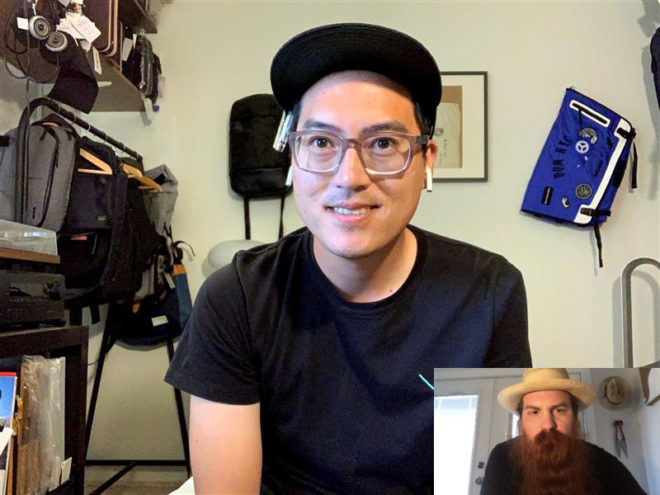
Taylor Welden (Senior Editor at Carryology): Nice! You’ve got a pack wall there behind you. I’m sure that’s just the tip of the iceberg?
Kenji Okada (Designer at Incase): Yeah, it’s a home office out of necessity so I had to throw it together and it’s getting overly crowded day by day but making do with it for sure. This is just some of the cooler things that I’ve collected through the years with Incase and stuff, but nice to get to look at them every day now instead of stashed away in some closet.
TW: I’m stoked to be interviewing you and to get to know you. Can you tell me a little about who you are? Where’d you grow up? Where else have you worked? What are some of your other passions and interests? Just basically who are you?
KO: So I grew up in Orange County here in California. So born and raised here. Went to school in Long Beach. And then in terms of career, design was almost a second career. I worked at a golf shop for like ten years before I really got into design. And did a little furniture design for a while. That was kind of my first taste of it. And then started working at Incipio Group, which owns Incase now. I did cellphone cases and worked on some of their other brands for a few years. And then a little while after the acquisition, Incase was like a dream job for me. That was the pinnacle – always collected bags. I’ve been with the Incipio Group now for seven years, with Incase exclusively for about four of those years so just long enough to kind of feel a little rooted there. But again, been a fan of Incase, coming in on day one I felt like I had been there for a long, long time, right? Professionally, yeah, that’s pretty much who I am. Outside of that, I told you golfing. That’s been a big part of my life. Into fly fishing, got into baking a little bit. Just things that calm me and take me away from the day to day grind for sure.
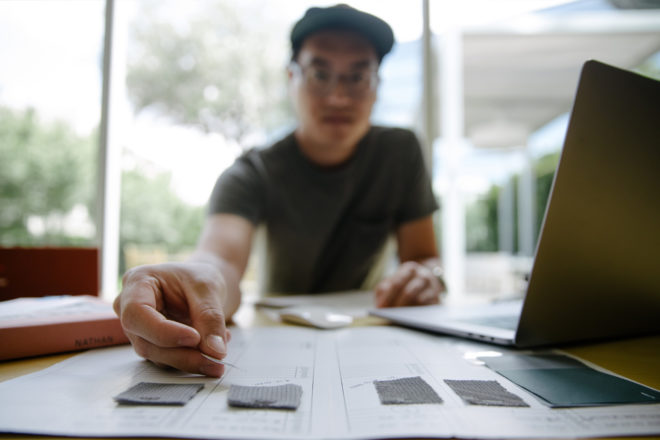
TW: I dig that. So this will be a fun one: What kind of themes or things have inspired your design work? Have they changed or matured or gone a different direction?
KO: I think a lot of people go through the design education process and then into the professional world… In school, you’re just trying to do the craziest things to stand out, constantly over designing all the time, right? So, I think as I got into the professional world, especially working in furniture for a little bit, more sculptural artistic kind of vibe. Like most designers I’ve always been drawn towards minimalism, but with that also looking beyond it and towards the evolution of it. At Incase, we have been built around very Bauhaus rooted principles, but we also strive to come up with newer ways to solve problems. By looking at new ways to do things we can retain a basis that is still very function driven but executed in a way that breathes new life through design. Whether respecting materials and the way that they naturally want to react, like in the fashion world with draping, or being able to manipulate and give structure to textiles. You can add a lot of texture and intrigue, but from a form language standpoint, still keeping that minimalism vibe to it.
TW: So in that same light, has sustainability always been a primary focus of yours? Or has it been an interest? Did it take joining Incase to really start exploring that idea?
KO: It was always a thought, I just didn’t know how to do it in an impactful way. Early on you can talk about sustainability and you can do projects that are involved in it, but then if it’s not actually selling, it’s not making an impact, right? It’s not actually getting out there. I can put it on my Instagram or a website – it’s talking about it, which is great, but there’s no follow through. So with Incase, I think they’ve always went about sustainability in their own way, a little more behind the scenes. For example, Incase has been utilizing great materials like Ecoya in our designs for years now but just going about it in a subtle way. These types of fabrics and their dyeing practices help conserve water without compromising the end result of the product. These types of practices and designing with more eco-friendly materials is what really opened me up to where we can take sustainability. I’m in a position to actually have a little bit broader of an impact and take those conversations and bring them out to more of a mass market.
TW: There’s a lot of cynicism in the growing sustainability space because of brands that are kind of greenwashing. What does a brand have to do to go beyond greenwashing and what’s an actual sustainable strategy?
KO: That is definitely a big one. For us we want to do this in a responsible way and have a full strategy in place. I’m not saying we’re going to become a 100% sustainable practice by this year but taking steps towards a healthier practice while not sacrificing the product is a great jumping off point. Making sure the material is right, and that it’s going to last is where I put a lot of focus. For me sustainability also means simply throwing away less stuff, right? If we can make a bag that’s going to last five-plus years, I feel like that is also sustainable in a way. The original customer is going to sell it off to some other guy who is also an enthusiast and that’s going to last them another few years down the line. It’s not as flashy and as attractive as other sustainable stories, but it’s one that’s actually having an impact. For me, number one is how do we make the best product possible? And now as sustainable materials are getting better, getting more accessible, how do we integrate that into our assortment and other parts of our process. We have been utilizing sustainable materials in our products since 2012 and now we look to our partnership with Bionic this year as a natural evolution of that. Bringing them on as a partner to help create intentional products from ocean waste is just the beginning of the story. Their community outreach with the Waterkeeper Alliance that are engaged in coastal communities in Costa Rica to recycle and sort plastic debris is an actual mission – a true activation. It’s that kind of holistic approach that takes things to the next level – there is an actual movement behind the product.
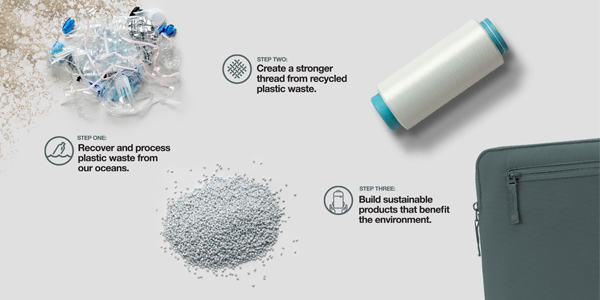
TW: Do you feel it’s possible for a massive brand to be successful with 100% products that are available in non-virgin recycled sustainable materials? Or do you think there’s always going to be a requirement for virgin materials?
KO: Yeah. I think eventually we can get there. I personally looked at companies like Patagonia, and their approach to sustainability. They are proof that a responsible approach to product and business can work. Getting to products that are 100% non-virgin recycled sustainable materials isn’t impossible, but there are hurdles. It’s definitely a challenge, but again, starting with just the exterior textiles and looking at how much stronger they are now, their durability and what we can now achieve with them. We tested different materials a while back – the strength wasn’t there. We couldn’t use it. But now, the quality of the product is to that of virgin materials at a price that we can offer it without a giant premium. So, I think there will come a point when we can get there. The more and more educated the public becomes the more the demand will grow. It’s all about education and an uncompromised product that will last.
TW: Why does Incase care about the earth? This is a costly venture. You guys could just turn a blind eye and you’d be fine. Why not just ignore it?
KO: We work off design principles that we’ve built on for years and years, way before my time. One of our main pillars is ‘delivering a better experience through good design’. And that has evolved. It’s very subjective, right? What is good design and what is a better experience? Our customers have evolved, they have become more educated and aware of the impact that we have on the environment. As our customer evolves, we are evolving too. As a result, that awareness and responsibility are now embedded in our brand ethos. We understand that we have a responsibility to take these steps and, again, trying to do it in an authentic way by not sacrificing the experience of the product. Like you said, you don’t want to make something just to be sustainable that doesn’t perform, that doesn’t work. It’s pushing to make a sustainable solution that strives to be better than a non-sustainable version.
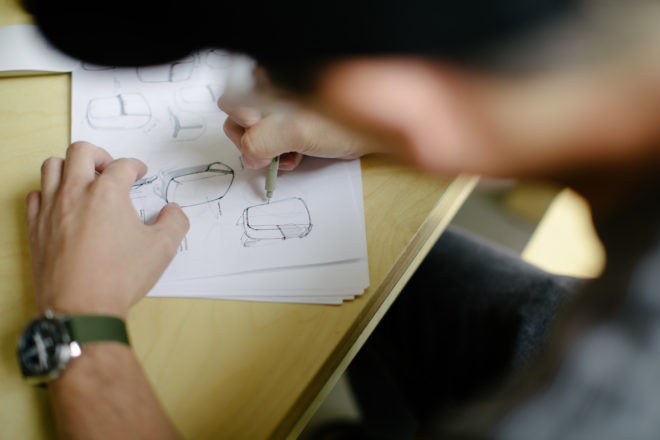
TW: If there’s one driving force or idea behind the whole Bionic collection, what do you think it would be?
KO: For me it’s not just the sustainability aspect of creating products from recycled plastics, but the community activation surrounding Bionic. They go about sustainability not only from a recycled textiles point of view, but also work with the Waterkeeper Alliance to set up proper recycling infrastructure in developing territories. The end result is an actual purpose-driven call to action that helps these coastal communities. This mission is what we found most attractive about working with the Bionic team. As a collection, it’s the idea of encapsulating these great initiatives into products that are equally as great.
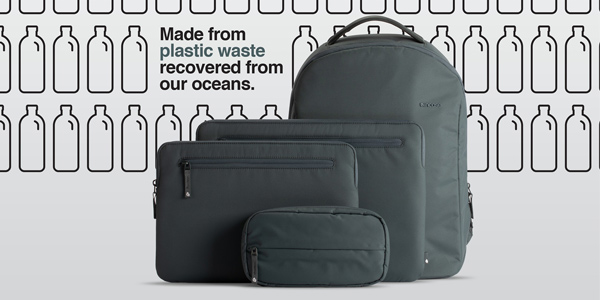
TW: From start to where we’re at now, how long has the development of this programme taken you?
KO: I would say since the conversation started with Bionic, we are right on 2 years. It’s been a long process mainly because we wanted to get it right. Not force it – and execute in an organic way. We worked closely with Bionic and their different materials to find the textile that was suitable for our application. A lot went into just the material development before we got into designing the products. Once we aligned on the final weave development Bionic was able to dial in proper fibers that offered the perfect amount of strength and key properties we were looking for.
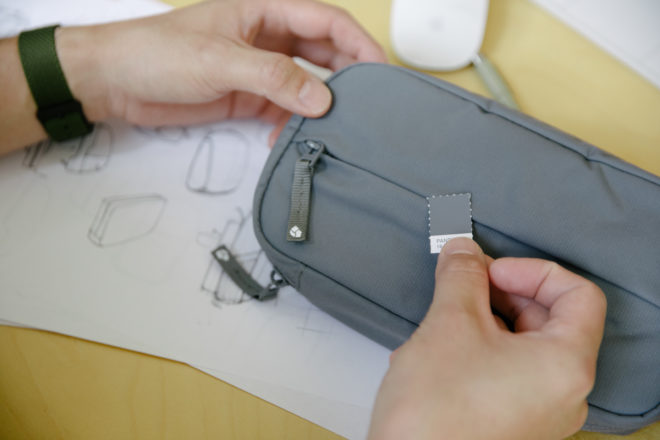
TW: Did Bionic even tell you that your ideas weren’t possible?
KO: Not with Bionic. They were always really open and willing to work with us, which was great. We definitely had other mills that just said, “No, we can’t do this.” Or, “We can and here’s the price.” And it’s just like, “Okay, you don’t want to do it then?” Or the lead times were just so insane that it just wasn’t… Bionic wanted to develop what was a true partnership through the entire process.
TW: Sure. Like Cinderella’s shoe, right?
KO: Exactly. In the beginning when we’re researching different companies/ mills looking to answer some simple questions. What’s their vision? Are we aligned? What kind of enthusiasm do they have? And again, it goes back to just that holistic approach and Bionic’s overall mission “Stronger Thread, Greater Good.” They’re really doing things genuinely to make a difference and an impact to help to upcycle plastic pollution while helping different communities.
TW: Were there any failures throughout this process?
KO: We failed early. We failed fast and we failed hard. We got through a lot of that early on and I think because we worked so hard at getting the material right from the beginning. After that it was more just trying to figure out what the assortment was going to look like and why these pieces. During the early days there were a bunch of different pieces that were kind of floating in and out of this collection that just didn’t make sense. What came from these trials was our final three-piece collection; a laptop sleeve, an accessory organizer and this classic tombstone bag. A collection that all worked together as a cohesive system created from traceable plastics recovered from our oceans.
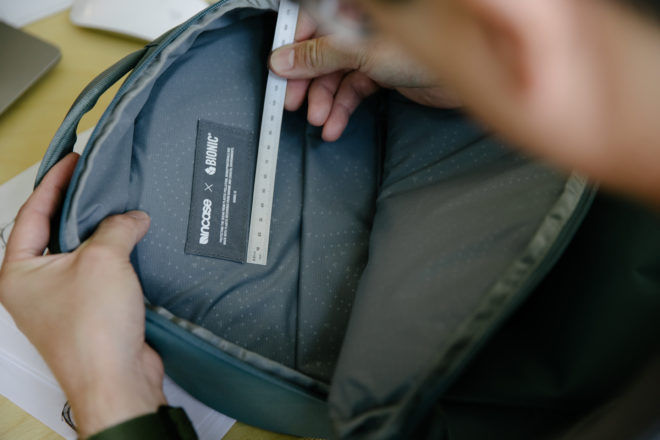
TW: It’s awesome to see an industry leader like Incase step up and take action and make change and we super applaud that. And there’s only so much that you as a designer and Incase as a brand can do. So in your opinion, what can someone like a customer do to make an impact on their own?
KO: I think that’s the easy part. Or the easiest answer, right? Read your labels and do research your products. I think that’s a big part of it is just understanding who the company is, what are they making and how it’s being made? And it’s not always the companies that are making the loudest and the most commotion that are doing the most. We try to have a very authentic approach and intentional approach to this, so for customers out there to not necessarily buy in for the hype but do your research. Our goal is to make products that improve the user’s experience and do so for a long time. Understanding how you consume and turn over or get rid of product has a huge impact. Buy meaningful things that will last.
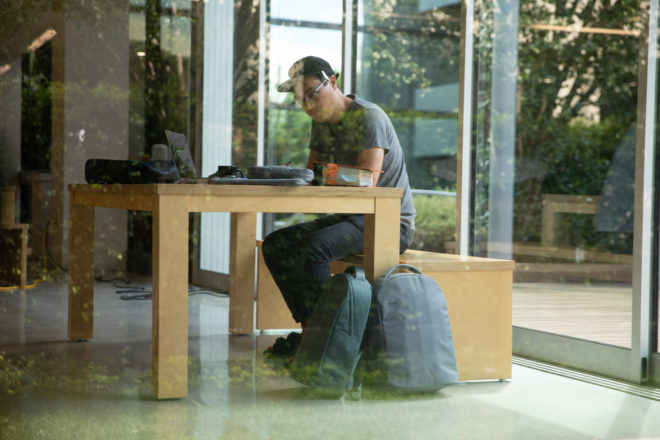
For more information on the Incase x Bionic collection visit incase.com
This article was written in partnership with the fine folks at Incase. Thanks so much for your support!





 Carry Awards
Carry Awards Insights
Insights Liking
Liking Projects
Projects Interviews
Interviews
